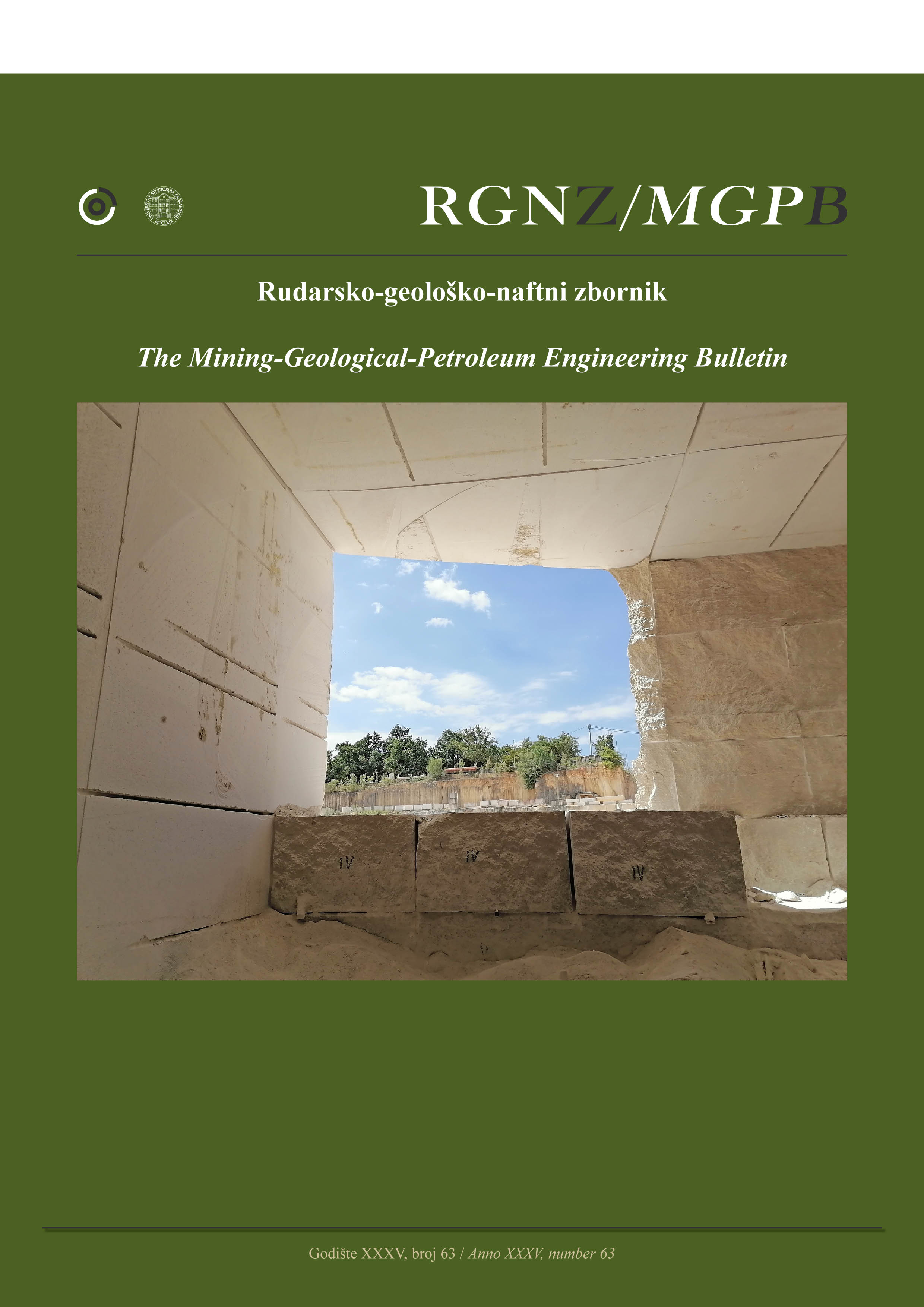Dissolution Kinetics of a Copper Oxide Ore Sample and Optimizing the Effective Parameters, Using Response Surface Methodology
DOI:
https://doi.org/10.17794/rgn.2023.2.5Keywords:
copper oxide, leaching, kinetics, response surface methodology, optimizationAbstract
In this research work, the leaching behavior of a copper oxide ore sample prepared from the Qaleh-Zari copper mine with a very high grade of 5.4% Cu (malachite and azurite) was investigated to evaluate the effects of significant operating parameters on copper recovery, including sulfuric acid concentration, solid percentage, particle size and agitation speed. Then, response surface methodology (RSM) and central composite design (CCD) were employed to optimize the leaching process and assess interactions between the effective parameters. In order to further analyze the leaching behavior, kinetics of copper dissolution was studied on the basis of the shrinking core models (SCM). The results showed a reduction in the rate of recovery with an increase in the solid percentage and/or particle size. In contrast, any increase in the agitation speed and/or acid concentration was found to improve the recovery. It was remarkable that increasing the sulfuric acid content, beyond a certain level, imposed no significant effect on the recovery. Optimal copper recovery was obtained with a solid percentage, agitation speed, particle size, and sulfuric acid concentration of 25.12%, 586 rpm, 70 µm, and 12.5%, respectively, leading to a recovery of 93.24%. A study on the leaching kinetics indicated that the dissolution rate was controlled by the fluid diffusion from product layer model with 30.71 kJ/mol of activation energy.
Downloads
Published
How to Cite
Issue
Section
License
Copyright (c) 2023 Hassan Maleki, Sajjad Chehreghani, Mohammad Noparast, Mir Saleh Mirmohammadi, Minoo Ghanbarzad

This work is licensed under a Creative Commons Attribution 4.0 International License.
Creative Commons-BY
Authors who publish with this journal agree to the following terms:
In agreeing this form, you certify that:
- You read the ethical codex of the RGN zbornik available at journal web.
- You submitted work is your original work, and has not previously been published and does not include any form of plagiarism.
- You own copyright in the submitted work, and are therefore permitted to assign the licence to publish to RGN zbornik.
- Your submitted work contains no violation of any existing copyright or other third party right or any material of an obscene, libellous or otherwise unlawful nature.
- You have obtained permission for and acknowledged the source of any illustrations, diagrams or other material included in the work of which you are not the copyright owner.
- You have taken due care to ensure the accuracy of the work, and that, to the best of your knowledge, there are no false statements made within it.
- All co-authors of this submitted work are aware of, and in agreement with, the terms of this licence and that the submitted manuscript has been approved by these authors.
Publication licence
You retain copyright in your submitted work, according to journal license policy (CC-BY). By signing this form you agree that RGN zbornik may publish it under the publication licence. In summary the licence allows the following:
Anyone is free:
- To copy, distribute, display, and perform the work.
- To make derivative works.
Under the following conditions:
- The original author must always be given credit.
- The work may not be used for commercial purposes.
- If the work is altered, transformed, or built upon, the resulting work may only be distributed under a licence identical to this one.
Exceptions to the licence
In addition to publishing the work printed under the above licence, RGN zbornik will also enable the work to be visible online.
The journal editorial can change the licence rules anytime but it cannot retroactively restrict author(s) rights.


